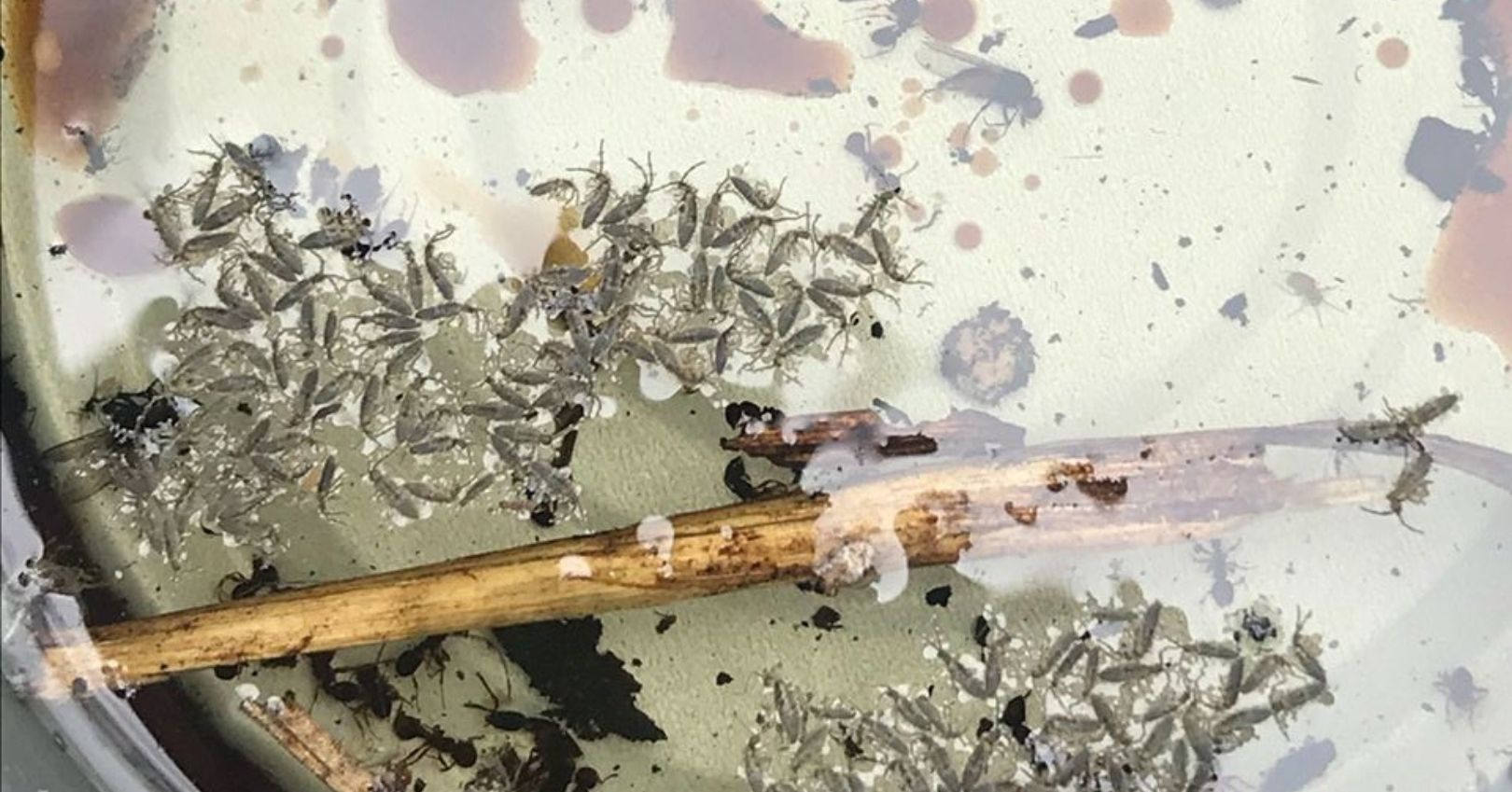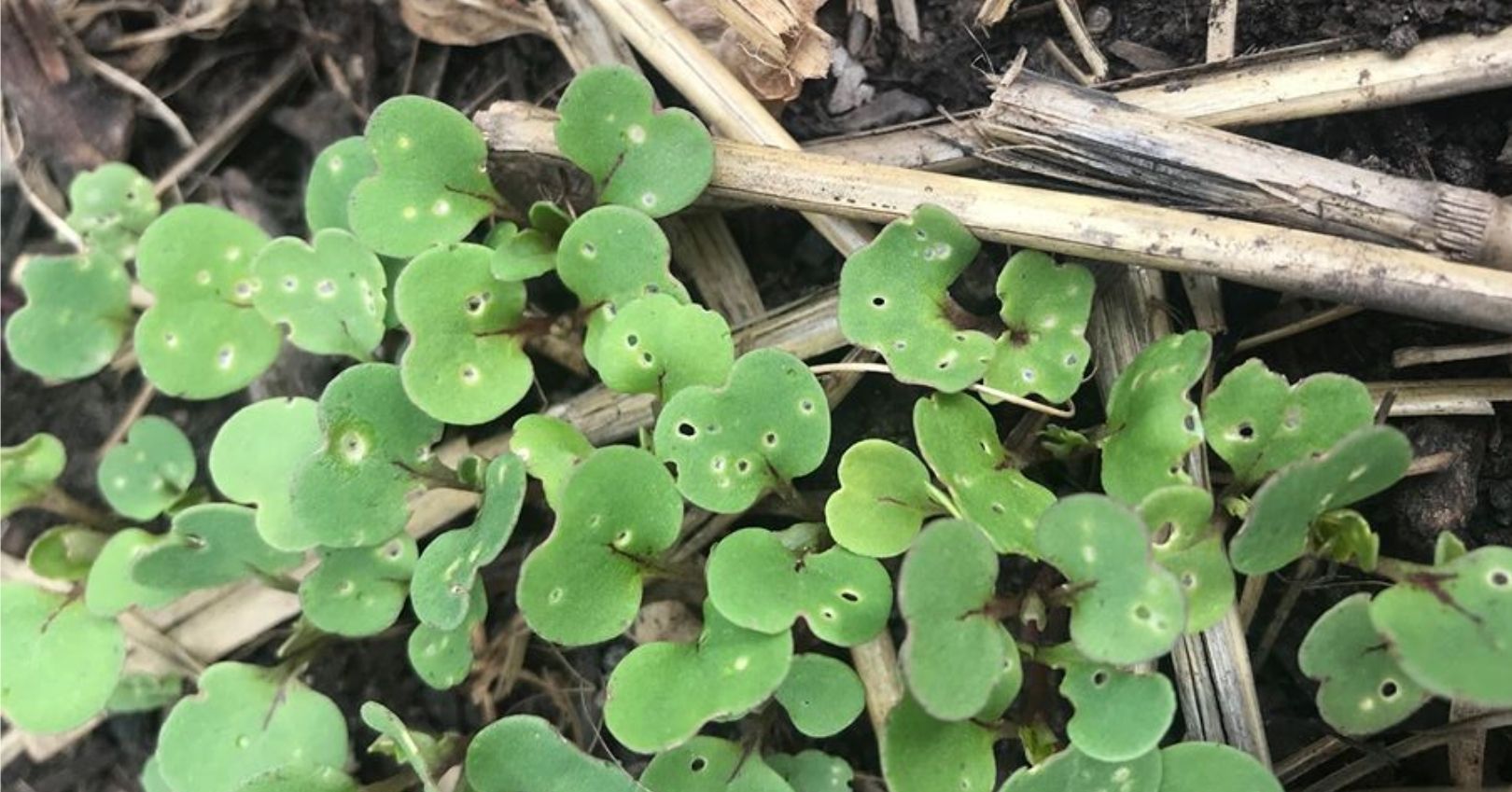Collembola (Springtails)
 Springtail (Susan Elis, Bugwood.org)
Springtail (Susan Elis, Bugwood.org) Springtail Trap
Springtail Trap
Springtail Feeding Damage on Kale Seedling
Description
Adult: Minute, soil-dwelling (primitive) insects that have a bi-forked appendage called a furcula that is folded underneath their body and used, by snapping downward, to propel them through the air when disturbed. Body color ranges from white to pale brown to red to purple.
Egg: Tiny spherical eggs laid singly or in clusters
Life History
Springtails are most common in heavy, organic soils during very wet, cool spring conditions. They overwinter primarily as resting adults below the soil surface.
Damage
Collembola (springtails) can be a pest of young greens in moist grow boxes and tunnels, especially if there is a high level of organic matter). They cause reduced stands and loss of vigor in surviving plants as they feed on germinating seeds or roots of small plants.
Hosts include multiple vegetables but spinach and beets are most commonly damaged.
Management
Cultural
- Reduce moisture and excess organic matter.
- Avoid planting in fields with high levels of organic matter.
- Till soil before and after planting to facilitate soil drying and discourage collembola populations.
- Select greens varieties with a more upright growth habit to reduce contact between the leaves and soil.
Chemical
Insecticides are not generally necessary for springtail management but there are home and commercial options available.
Biologial
Natural enemies of springtails include rove beetles and predatory mites.
Management
Sampling (as discussed above) is important in determining management decisions because in most cases, once damage is noticed, little can be done without replanting.

